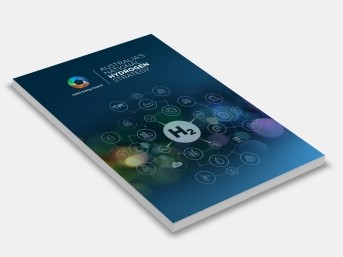Australia's National Hydrogen Strategy
COAG Energy Council Hydrogen Working Group
In December 2018, the Council of Australian Governments Energy Council set a vision for a clean, innovative, safe and competitive hydrogen industry that benefits all Australians and is a major global player by 2030. The Council agreed to establish a Hydrogen Working Group, chaired by Australia’s Chief Scientist, Dr Alan Finkel, to develop a National Hydrogen Strategy that can achieve this vision. Australia has the resources, and the experience, to take advantage of increasing global momentum for clean hydrogen and make it our next energy export. There is potential for thousands of new jobs, many in regional areas – and billions of dollars in economic growth between now and 2050. We can integrate more low-cost renewable generation, reduce dependence on imported fuels, and help reduce carbon emissions in Australia and around the world.
Much of how this opportunity will evolve remains uncertain, but there are risks in not acting early. Australia’s Strategy will follow an adaptive approach. It will focus on actions that remove market barriers, efficiently build supply and demand, and accelerate our global cost-competitiveness. These will equip us to scale up quickly as markets develop.
A key element of Australia’s approach will be to create hydrogen hubs – clusters of large-scale demand. These may be at ports, in cities, or in regional or remote areas, and will provide the industry with its springboard to scale. Hubs will make the development of infrastructure more cost-effective, promote efficiencies from economies of scale, foster innovation, and promote synergies from sector coupling. These will be complemented and enhanced by other early steps to use hydrogen in transport, industry and gas distribution networks, and integrate hydrogen technologies into our electricity systems in a way that enhances reliability.
Building and demonstrating broad capability in making, moving, and using clean hydrogen is only part of the story. We will set clear regulatory frameworks and ensure development has a positive influence on energy prices and energy security. Through our international engagement, Australia will work with other countries to develop a scheme to track and certify the origins of internationally traded clean hydrogen. We will work constructively to shape international markets and open new frontiers for trade.iv Australians will want the new jobs and growth of clean hydrogen to be achieved without compromising safety, cost of living, water availability, access to land or environmental sustainability. Governments and industry have the responsibility to ensure community safety, confidence and trust in the new industry, and deliver benefits for all Australians.
The vision we set today, and the actions we plan, are not enough if we aren’t prepared to measure our progress and ultimately our successes. Nor can we be adaptive if we aren’t monitoring global developments. For the next decade, the Strategy identifies indicators that will show where technology and markets are advancing quickly, and where they are moving slowly or falling behind. At the same time, tracking our progress on clear measures of success – such as being a top three supplier to the Asian market, and maintaining an impeccable safety record – will ensure we are accountable to the high expectations of the Australian public.
The Strategy is the culmination of considerable analysis, consultation with experts, industry and the public, and an extensive body of original research. It is designed to be a ‘living document’ – updated and revisited as the industry develops.
In total, the Strategy identifies 57 joint actions. These actions by themselves will not achieve the vision laid out by Ministers. They are first steps, on which later actions can build. Actions are themed around national coordination, developing production capacity, supported by local demand; responsive regulation; international engagement; innovation and research and development (R&D); skills and workforce; and community confidence. The actions consider hydrogen in relation to exports, transport, industrial use, gas networks, electricity systems, and cross-cutting issues such as safety, skills, and environmental impacts.
All levels of government, private industry, and the research community have the opportunity to help Australia realise its hydrogen potential and reap rewards for the economy, the community and the environment to 2030 and beyond. Success will rely on working together. The possibilities are exciting: our Strategy will help us realise the vision.
Contents:
Foreword
Message From The Chair
Executive Summary
Taking Action: Adaptive Pathway
Measures Of Success
Conversions And Units
How Much Hydrogen Is That?
Jurisdictional Showcase
1: Australia’s Clean Hydrogen Potential
2: Making And Taking Australia’s Opportunity
3: The Journey To Hydrogen Powerhouse
4: Enabling Industry Growth
5: Building Benefits For The Australian Community
6: Tracking Progress
7: Beyond 2030
Strategic Actions
Appendix A: Scenario Analysis
Appendix B: Abbreviations, Acronyms And Glossary
Appendix C: Supporting Reports
Appendix D: Consultation
Appendix E: Terms Of Reference
Appendix F: Coag Hydrogen Working Group
Appendix G: Acknowledgements
